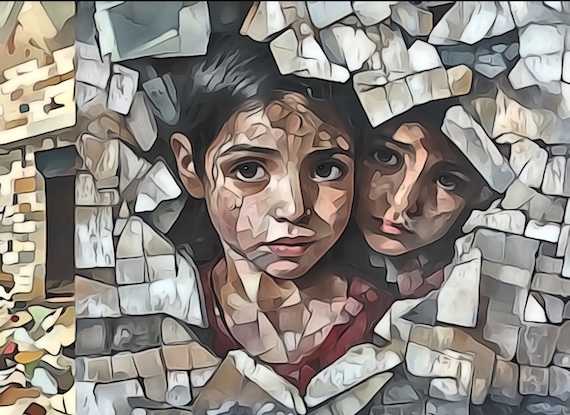Ann Arbor (Informed Comment) – An article just published in The Lancet by Prof Michel Guillot et al. found that the campaign against Gaza civilians of the extremist government of Israeli Prime Minister Benjamin Netanyahu lowered the life expectancy in the Strip during the first year of the war by nearly half.
In 2023 the life expectancy in Gaza was 75.5 years.
Today, the life expectancy in Gaza is 40.6 years.
Although life expectancy dropped more for males, by 38 years, female life expectancy fell by 29.9 years. This latter statistic is a powerful indictment of Israeli actions in the Strip, which clearly either deliberately targeted civilians or showed a reckless disregard for civilian life.
The Israeli extremists knocked nearly 30 years off the life of an average Palestinian woman in Gaza even though they were not combatants!
Gaza’s life expectancy is now the lowest of any territory in the world. The places that previously had the lowest life expectancy are Chad and Lesotho, at 53 years. Nigeria’s life expectancy is 53.6 years, and Central African Republic’s is 54.5 years.
I don’t usually like to link to graphic images, but the story of thousands of Palestinian children’s deaths has been studiously ignored in American mass media and it is worth remembering what it looked like.
TRT World: “Heartbroken Palestinian mother tries to revive her dead son”
Child mortality has an outsized impact on life expectancy. When countries have low life expectancy it is usually not because the 65-year-olds are suddenly dropping dead. It is because large numbers of children don’t survive childhood. The child mortality rate for Chad is 113.8 deaths per 1,000 live births.
In Palestine as a whole in 2022 the infant mortality rate was only 12.3 deaths per 1,000 live births. The Israeli total war on the people of Gaza, in short, has catapulted the infant mortality rate into the stratosphere, making it even worse than that of Chad.
AP reports, “The U.N. Office for the Coordination of Humanitarian Affairs reported Thursday that of the 40,717 Palestinian bodies identified so far in Gaza, one-third – 13,319 – were children.” (Emphasis added.)
The death tolls are of course much higher than these figures, with thousands buried under rubble and never recovered. Neither these figures nor the Lancet study took account of deaths from poor sanitation and disease ultimately caused by the Israeli total war, and which a previous Lancet study estimated would over time would amount to 186,000 deaths.
Moreover, the deliberate destruction by Israelis of Gaza’s health infrastructure, including malicious smashing of medical equipment, has left thousands at risk. The UN Office for the Coordination of Humanitarian Affairs reports that some 350,000 chronically ill persons in Gaza face lack of dialysis machines and other necessary equipment:
- “Chronically ill patients, estimated to number about 350,000 people, across Gaza continue to face critical shortages of essential medications and treatments. According to official sources cited by the World Health Organization (WHO), as of 2022, there were over 60,000 patients with raised blood glucose, about 45,000 patients living with cardiovascular disease, and more than 1,500 patients in need of kidney dialysis to maintain life. Additionally, Anera reported that many new patients have developed non-communicable diseases at an unusually young age, due to war-related stress, severely limited access to nutritious and calorically adequate food, and the consumption of salty or contaminated drinking water.”
Middle East Eye: “Palestinian Father mourns Daughter Killed by Israeli Strike”
In Israel, by the way, the life expectancy is 82.7 years. As noted, rates of infant mortality often determine life expectancy, and this discrepancy pointed to the much better maternal and pediatric care available to Israelis compared to Palestinian civilians in Gaza, who suffered under a severe Israeli blockade since 2007.
Lancet authors Michel Guillot et al. also gave further credence to the Gaza Ministry of Health statistics on deaths in the Gaza campaign, comparing those dead identified and named to earlier UN refugee rolls and confirming these identities.



 © 2025 All Rights Reserved
© 2025 All Rights Reserved